To celebrate Black History Month, the Black Students at Ivey Collective (BSIC) has been spotlighting and sharing stories of influential Black Canadians on Ivey’s social media accounts.
Each week, they shared profiles of civil rights icons, athletes, doctors, inventors, reporters, and artists. Swipe through some of the social posts below and view the full profiles on our BHM Instagram highlight.
A message from Sakariya Ahmed, HBA ’19, Co-founder of BSIC, EDI Advisory Council member:
Week 1: Civil Rights Icons
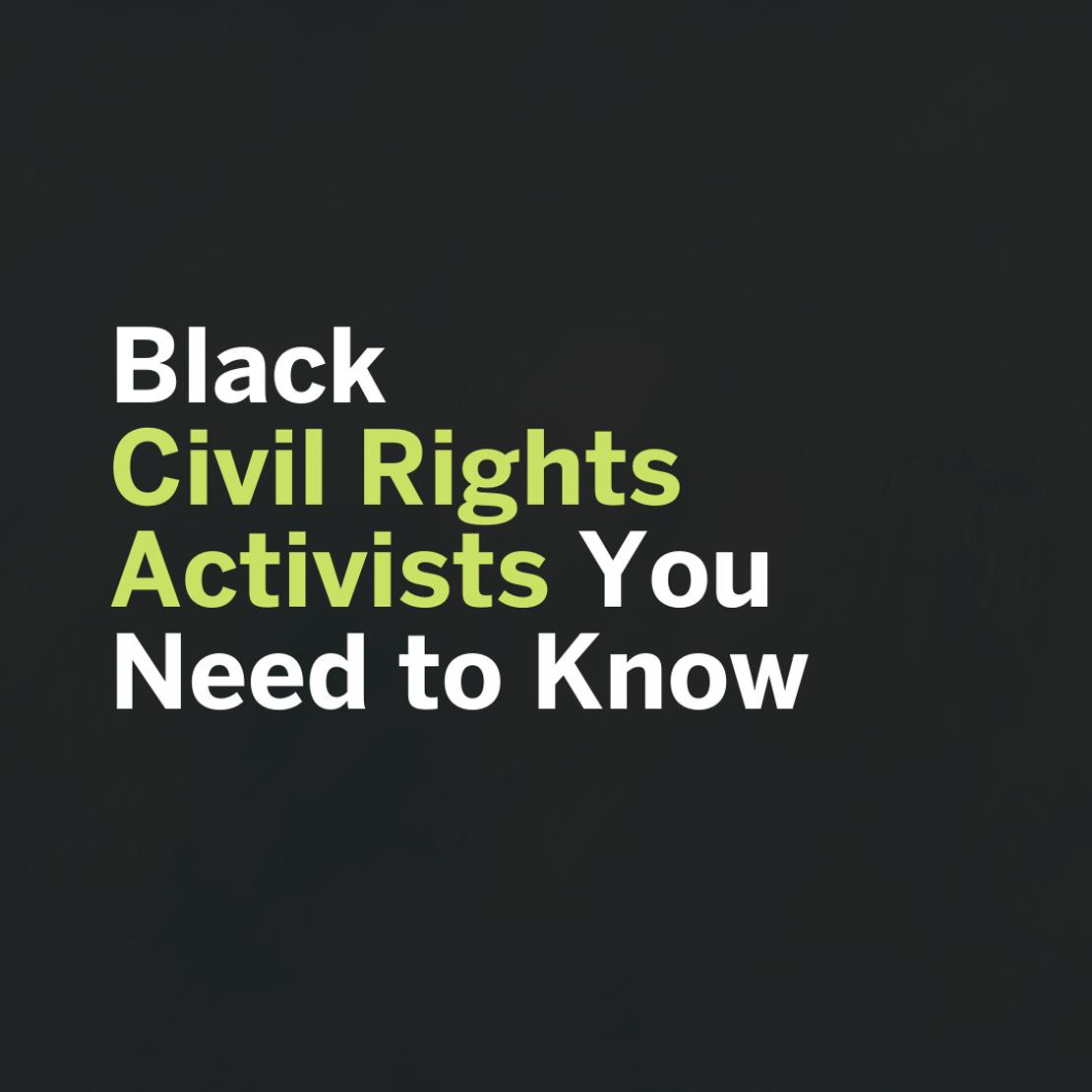
To celebrate Black History Month, the Black Students at Ivey Collective (BSIC) is sharing stories of influential Black Canadians. This week’s theme was civil rights icons.
Swipe through to read some of their profiles and tap the BHM highlight on the @iveybusiness account for more information.
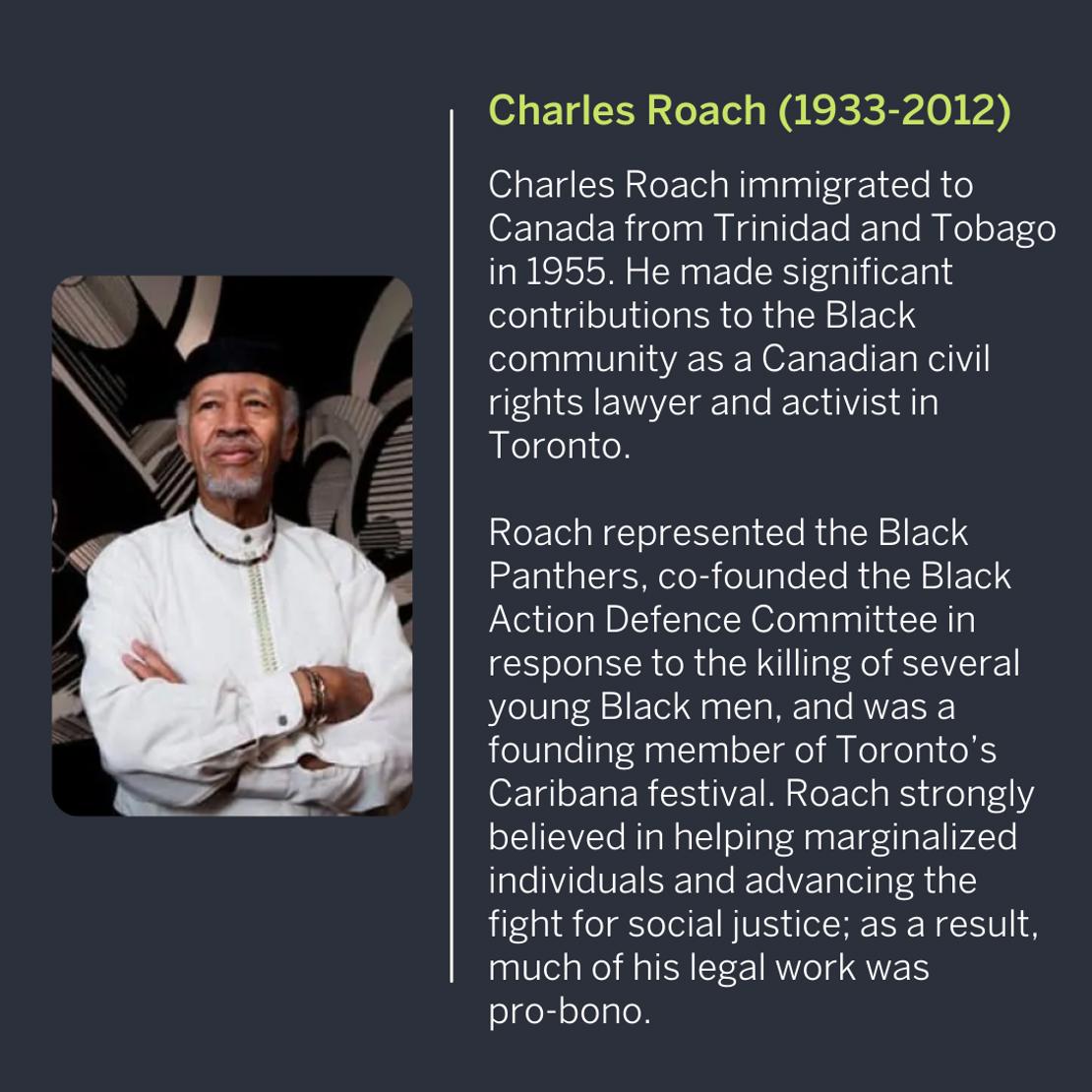
Charles Roach
Charles Roach immigrated to Canada from Trinidad and Tobago in 1955. He made significant contributions to the Black community as a Canadian civil rights lawyer and activist in Toronto.
Roach represented the Black Panthers, co-founded the Black Action Defence Committee in response to the killing of several young Black men, and was a founding member of Toronto's Caribana festival. Roach strongly believed in helping marginalized individuals and advancing the fight for social justice; as a result, much of his legal work was pro-bono.
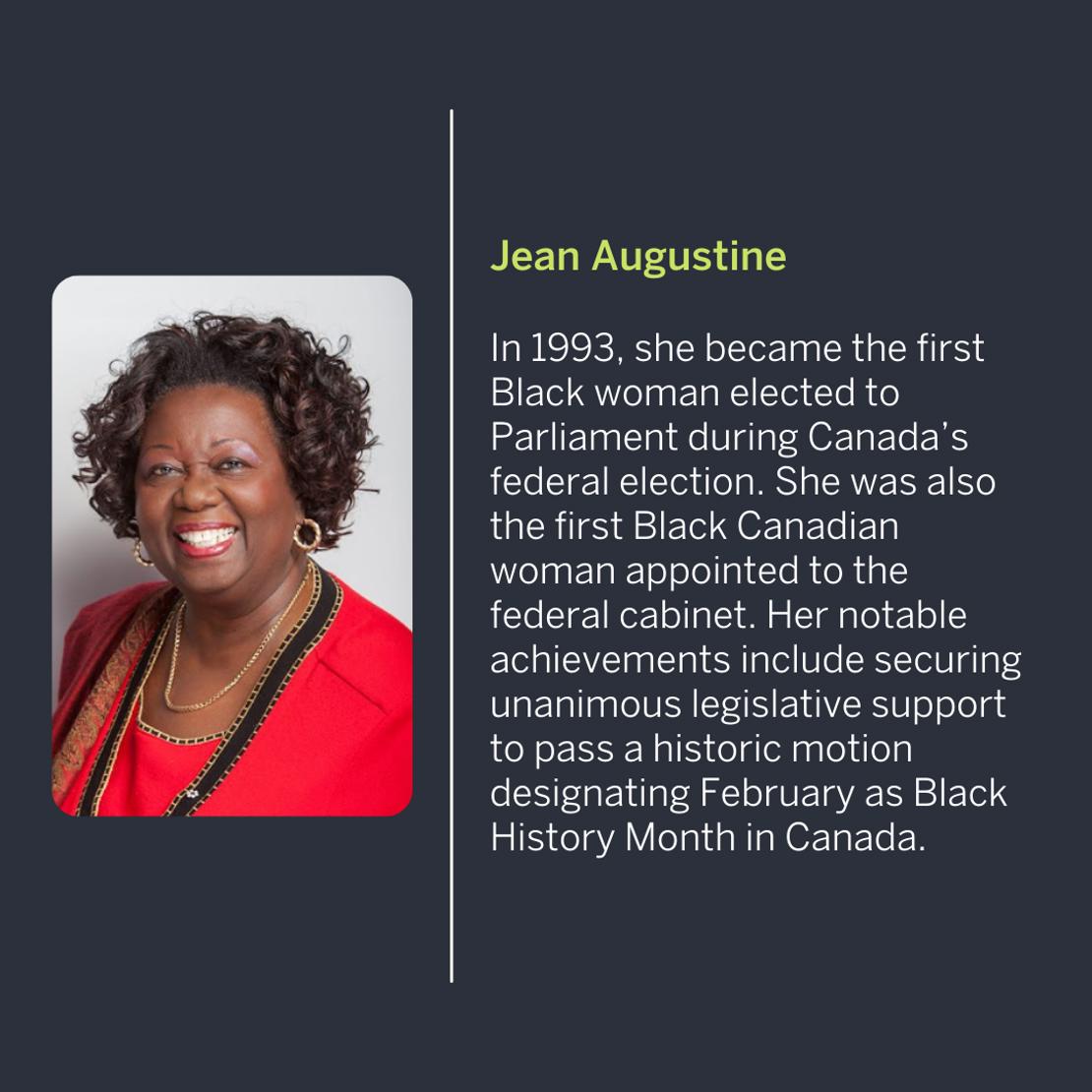
Jean Augustine
In 1993, she became the first Black woman elected to Parliament during Canada's federal election. She was also the first Black Canadian woman appointed to the federal cabinet. Her notable achievements include securing unanimous legislative support to pass a historic motion designating February as Black History Month in Canada.
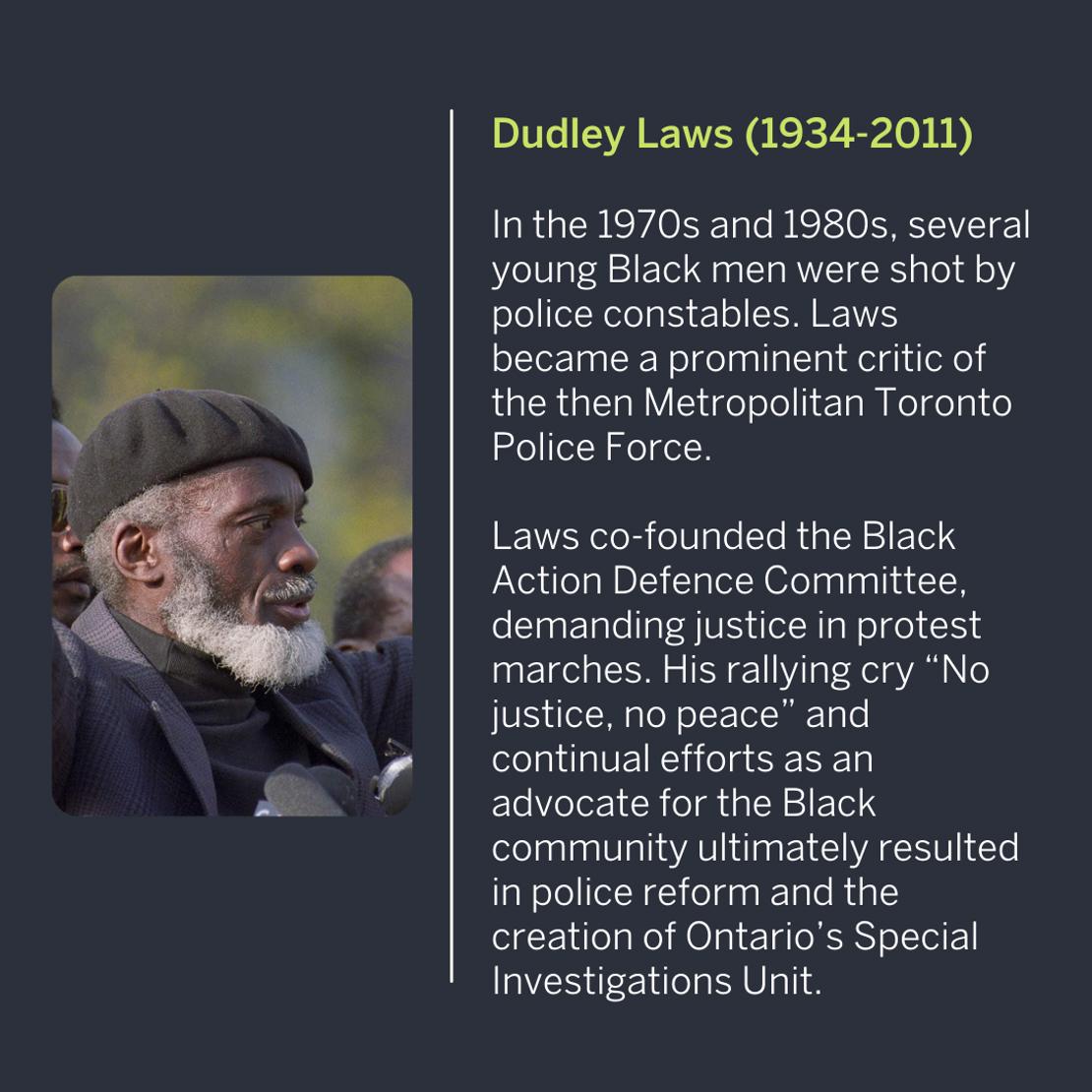
Dudley Laws (1934-2011)
In the 1970s and 1980s, several young Black men were shot by police constables. Laws became a prominent critic of the then Metropolitan Toronto Police Force.
Laws co-founded the Black Action Defence Committee, demanding justice in protest marches. His rallying cry "No justice, no peace" and continual efforts as an advocate for the Black community ultimately resulted in police reform and the creation of Ontario's Special Investigations Unit.
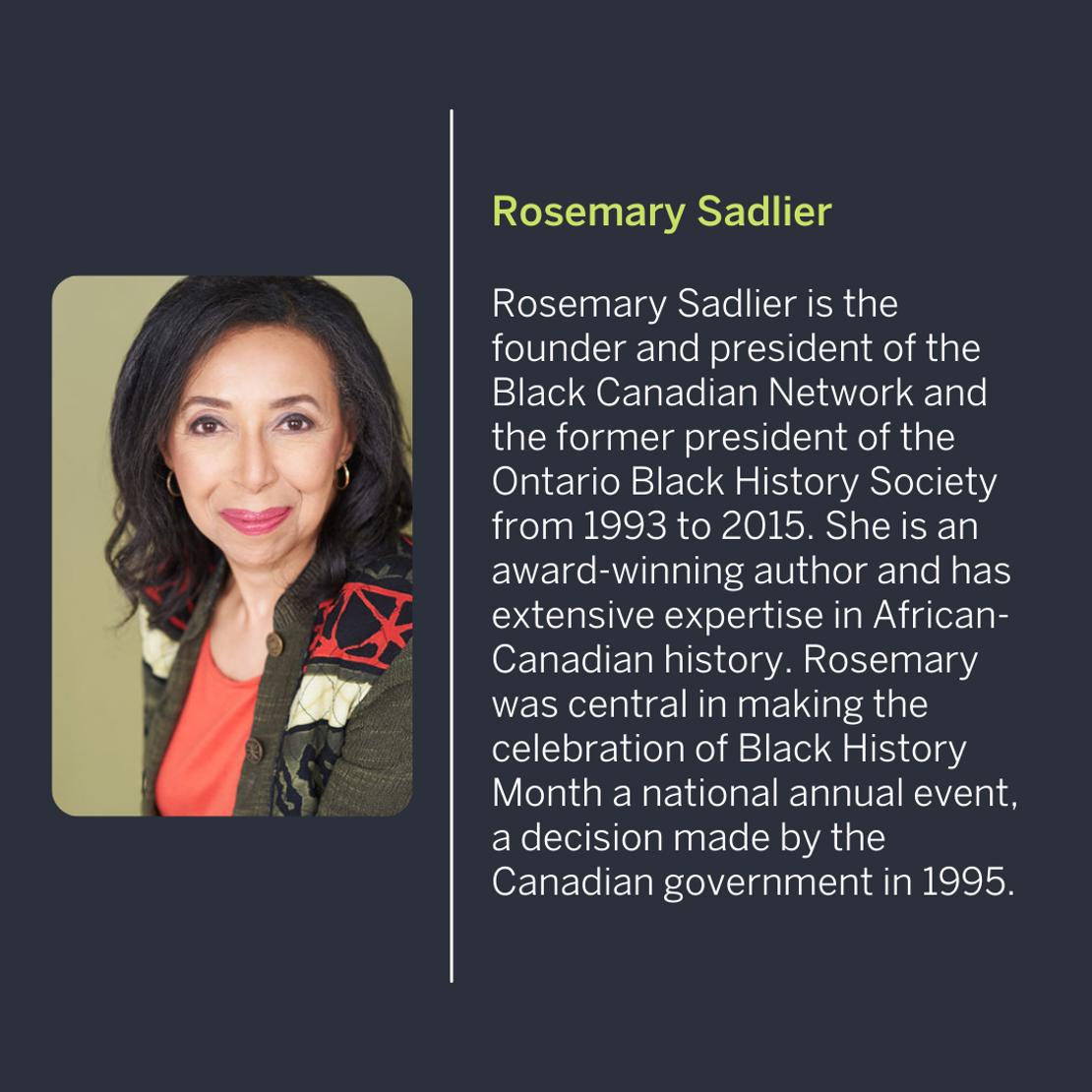
Rosemary Sadlier
Rosemary Sadlier is the founder and president of the Black Canadian Network and the former president of the Ontario Black History Society rom 1993 to 2015. She is an award-winning author and has extensive expertise in African-Canadian history. Rosemary was central in making the celebration of Black History Month a national annual event, a decision made by the Canadian government in 1995.
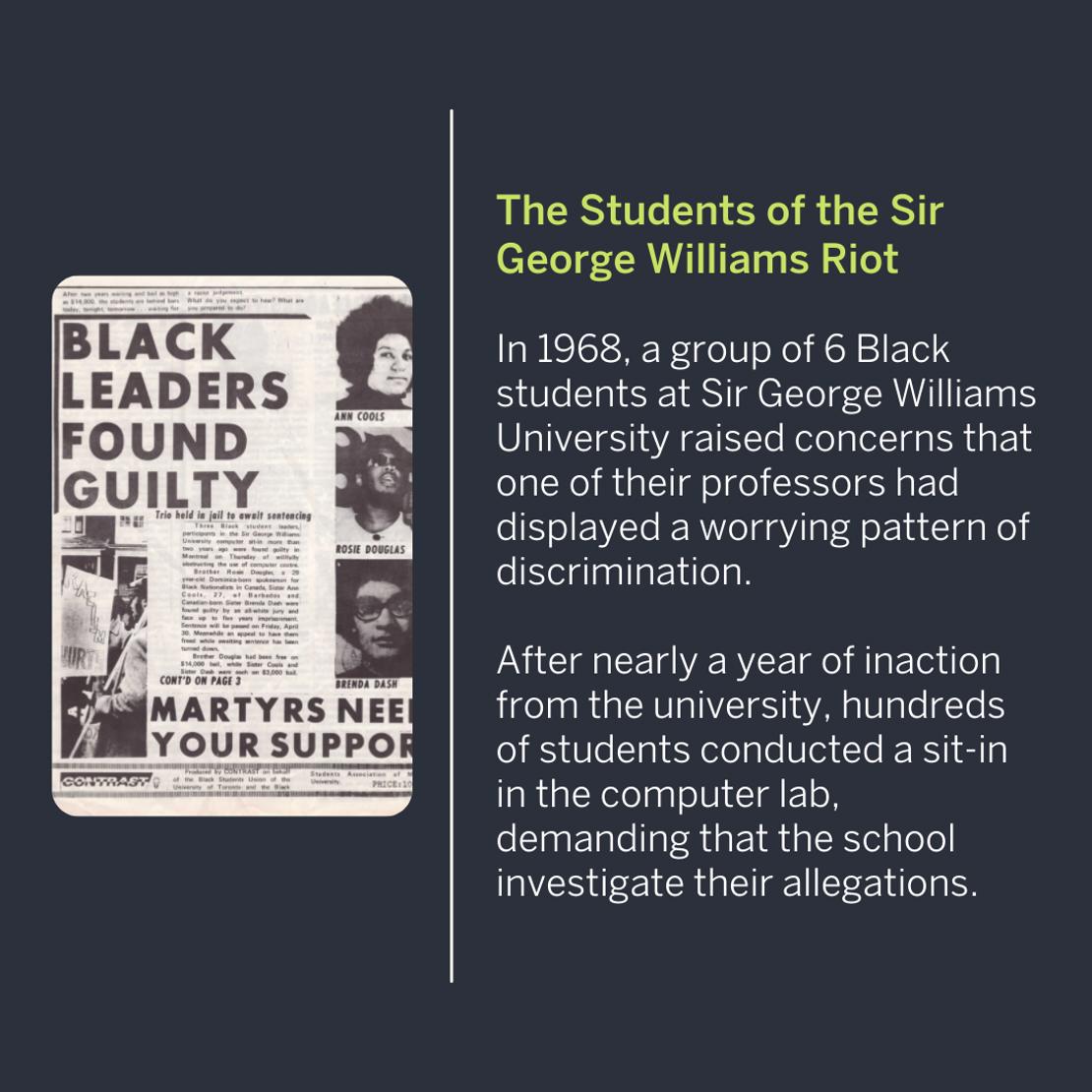
The Students of the Sir George Williams Riot
In 1968, a group of 6 Black students at Sir George Williams University raised concerns that one of their professors had displayed a worrying pattern of discrimination. After nearly a year of inaction from the University, hundreds of students conducted a sit-in in the computer lab, demanding that the school investigate the allegations.
Week 2: Athletes

To celebrate Black History Month, the Black Students at Ivey Collective (BSIC) is sharing stories of influential Black Canadians. This week, they've rounded up a list of athletes.
Swipe through to read some of their profiles and tap the BHM highlight on the @iveybusiness account to see more spotlights and a message from the BSIC. ⠀
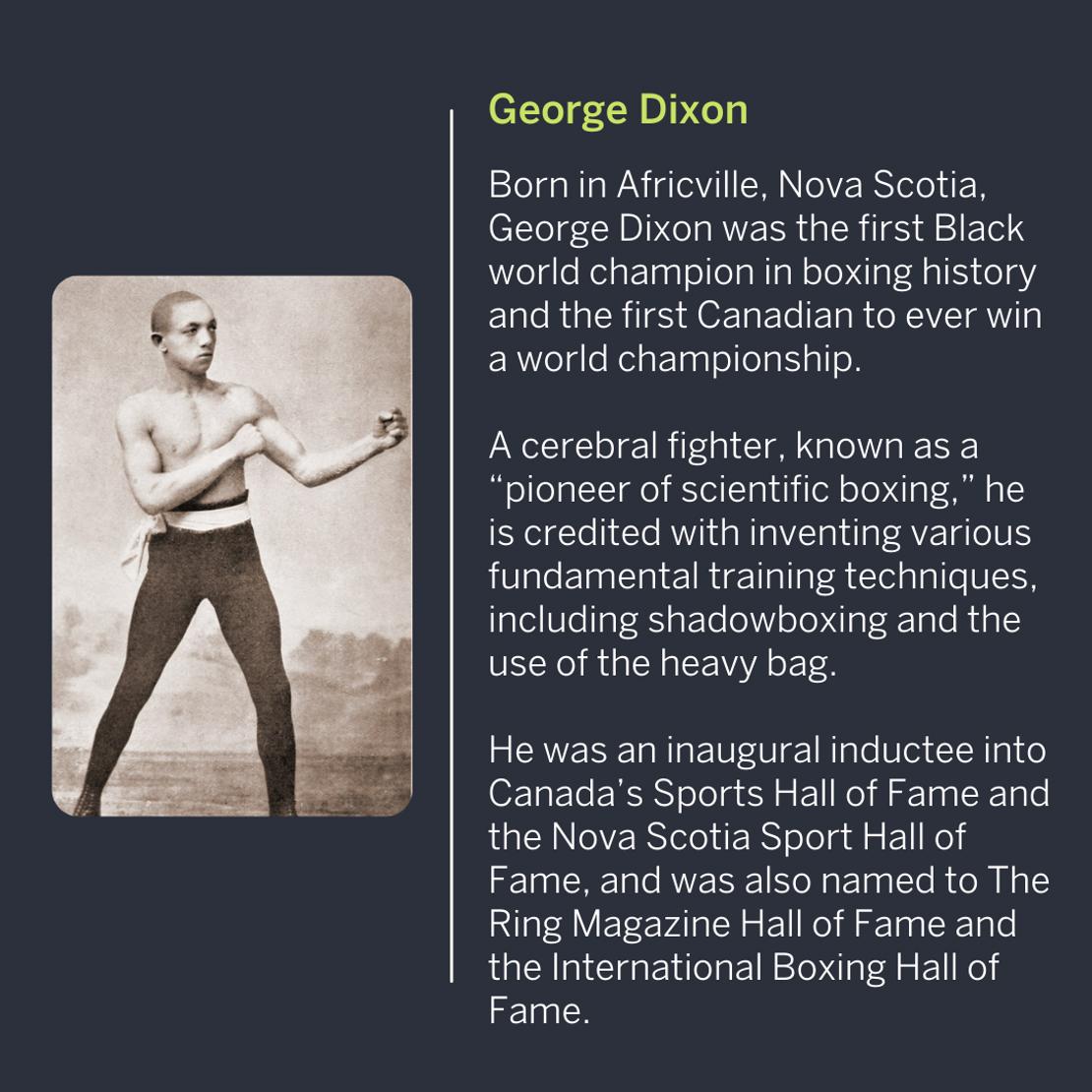
George Dixon
Born in Africville, Nova Scotia, George Dixon was the first Black world champion in boxing history and the first Canadian to ever win a world championship. A cerebral fighter, known as a "pioneer of scientific boxing", he is credited with inventing various fundamental training techniques, including shadowboxing and the use of the heavy bag. He was an inaugural inductee into Canada's Sports Hall of Fame and the Nova Scotia Sport Hall of Fame, and was also named to The Ring Magazine Hall of Fame and the International Boxing Hall of Fame.

Angela James
Known as "The Wayne Gretzky of Women's Hockey", Angela James was women's hockey's first superstar. She played in the first women's world championship, an unsanctioned tournament in 1987. In 2008, she was one of three women, and first Black woman, inducted into the International Ice Hockey Federation (IIHF) Hall of Fame. Canada's Sports Hall fo Fame inducted James in 2009. In 2008, the Angela James Bowl was instituted, awarded annually to the leading scorer in the Canadian Women's Hockey League (CWHL).
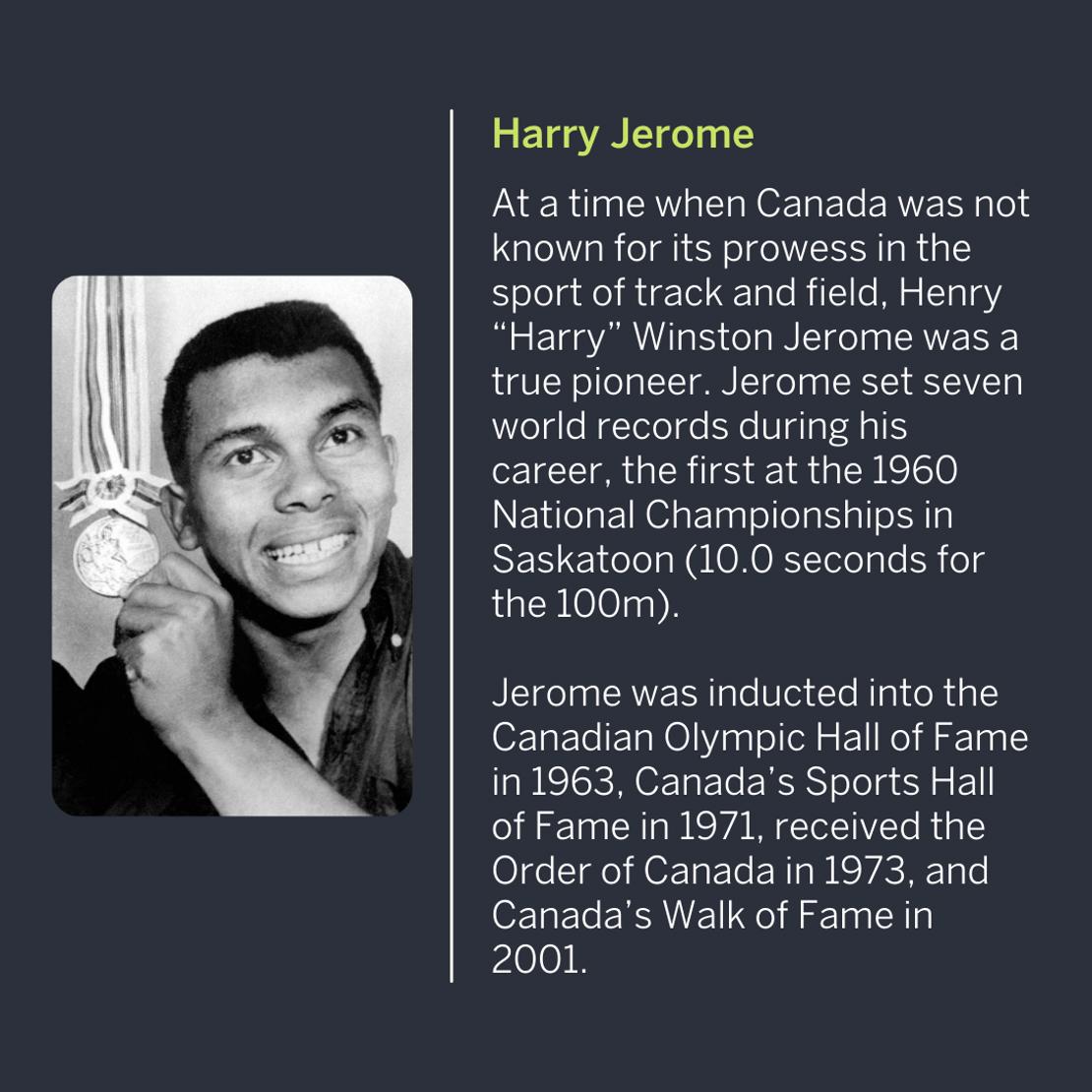
Harry Jerome
At a time when Canada was not known for its prowess in the sport of track and field, Henry "Harry" Winston Jerome was a true pioneer. Jerome set seven world records during his career, the first t the 1960 National Championships in Saskatoon (10.0 seconds for 100m). Jerome was inducted into the Canadian Olympic Hall fo Fame in 1963, Canada's Sports Hall of Fame in 1971, received the Order of Canada in 1973, and Canada's Walk of Fame in 2001.
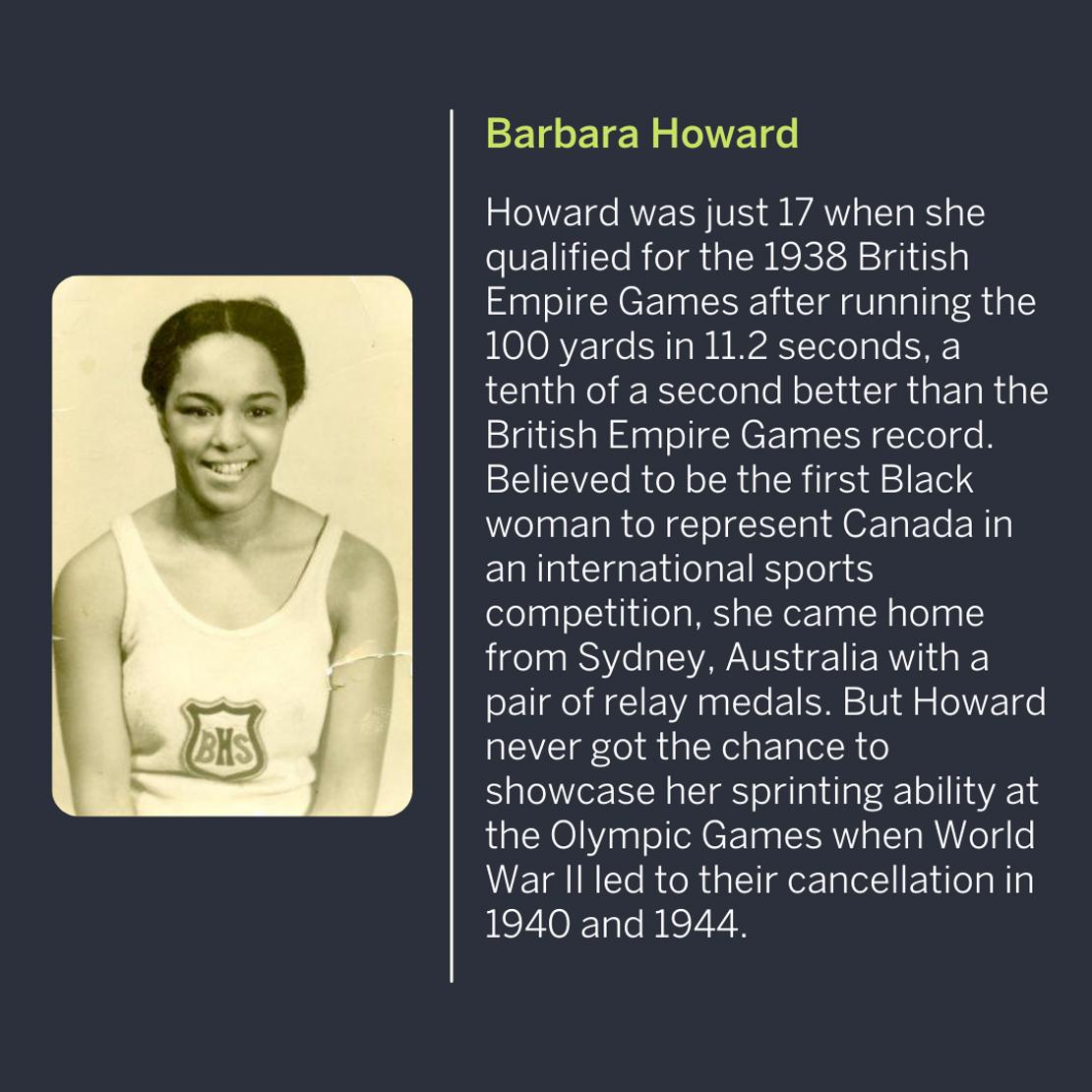
Barbara Howard
Howard was just 17 when she qualified for the 1938 British Empire Games after running the 100 yards in 11.2 seconds, a tenth of a second better than the British Empire Games record. Believed to be the firs Black woman to represent Canada in an international sports competition, she came home from Sydney, Australia with a pair of relay medals. But Howard never got the chance to showcase her sprinting ability at the Olympic Games when World War II led to their cancellation in 1940 and 1944.
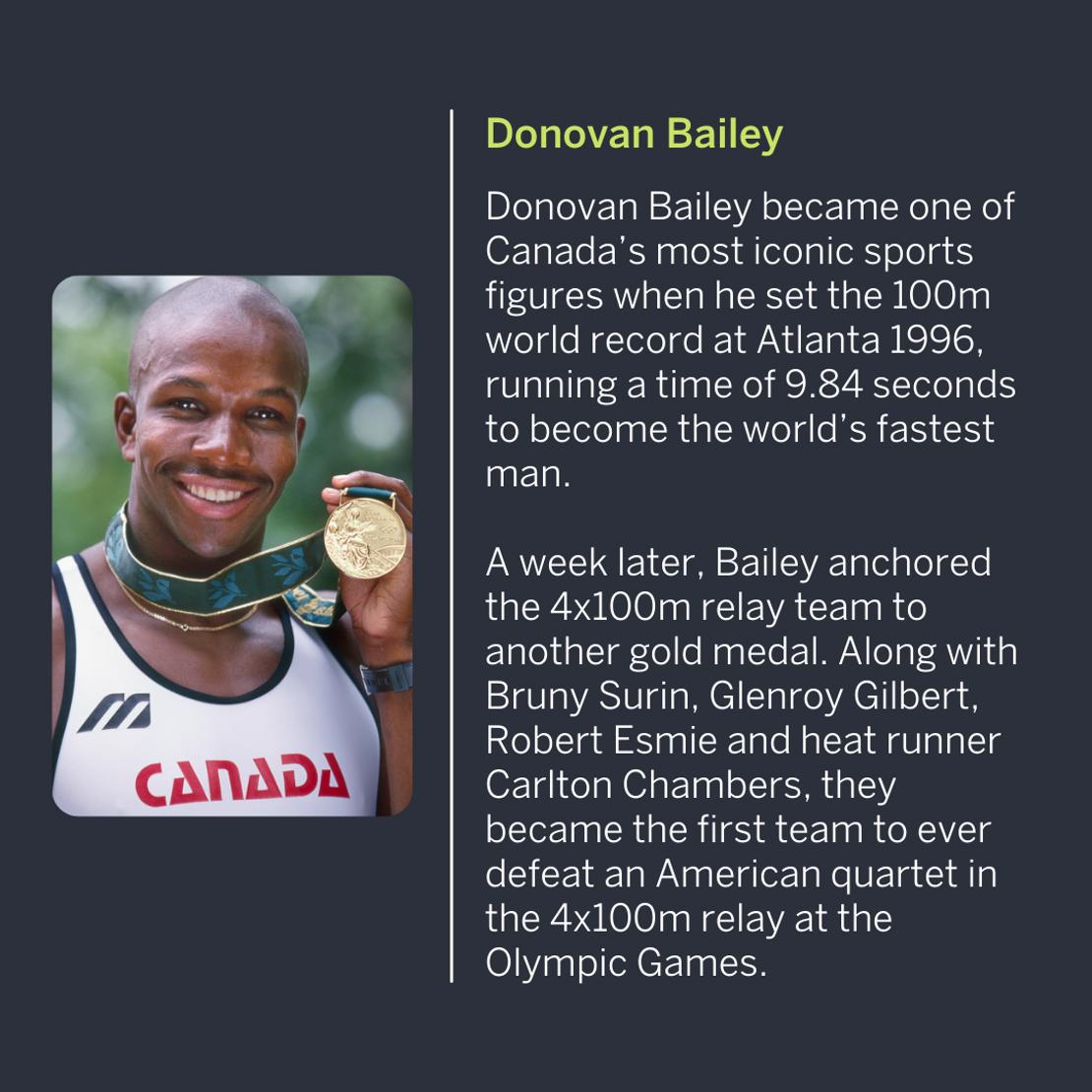
Donovan Bailey
Donovan Bailey became one of Canada's most iconic sports figures when he set the 100m world record at Atlanta 1996, running a time of 9.84 seconds to become the world's fastest man. A week later, Bailey anchored the 4x100m relay team to another gold medal. Along with Bruny Surin, Glenroy Gilbert, Robert Esmie and heat runner Carlton Chambers, they became the first team to ever defeat an American quartet in the 4x100m relay at the Olympic Games.
Week 3: Professionals
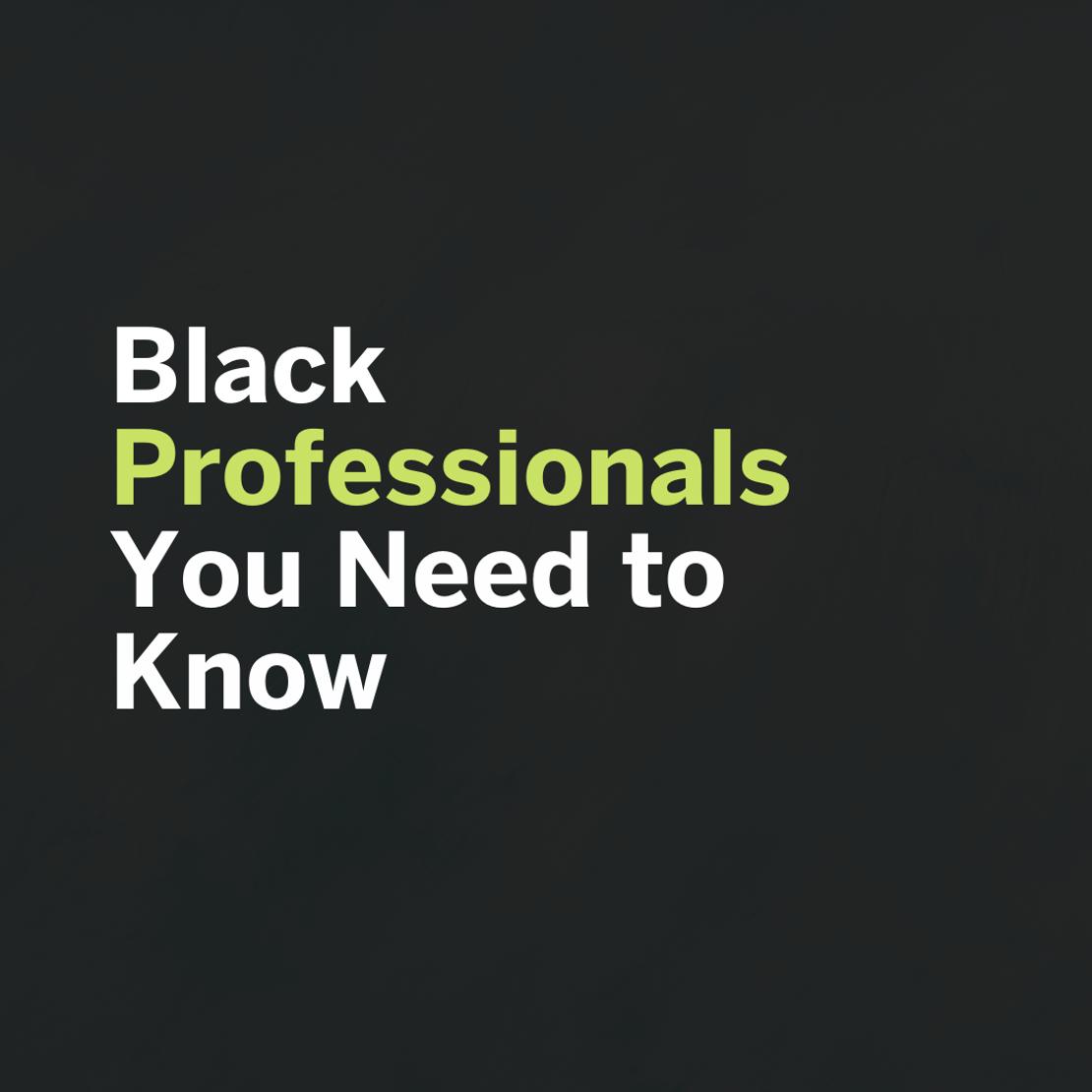
Black Professionals You Need to Know
To celebrate Black History Month, the Black Students at Ivey Collective (BSIC) have been sharing stories of influential Black Canadians. This week’s theme was professionals, including inventors, doctors, and reporters.
Swipe through to read some of their profiles and tap the BHM highlight on the @iveybusiness account for more information.
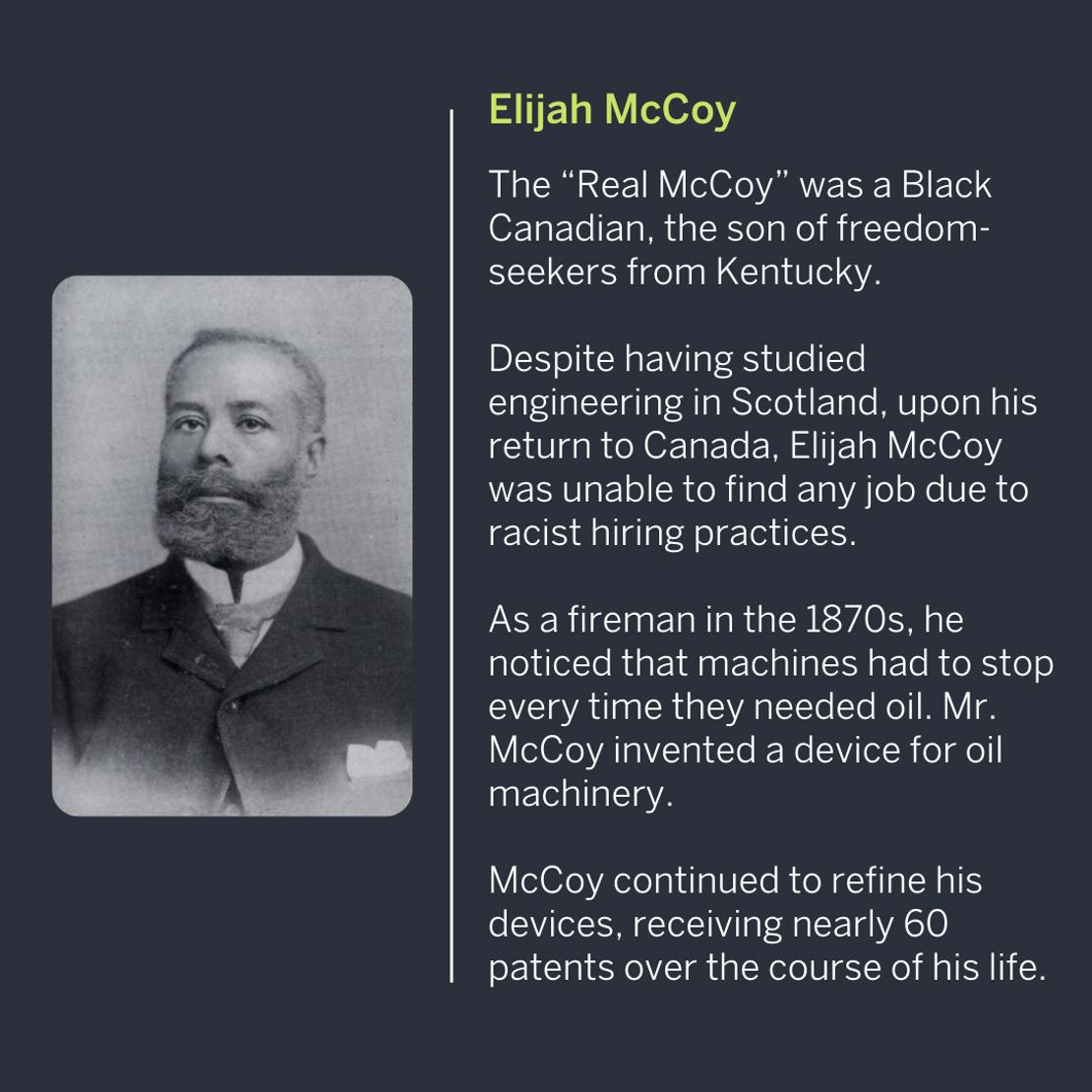
Elijah McCoy
The "Real McCoy" was a Black Canadian, the son of freedom seekers from Kentucky. Despite having studied engineering in Scotland, upon his return to Canada, Elijah McCoy was unable to find any job due to racist hiring practices. As a fireman in the 1870s, he noticed that machines had to stop every time they needed oil. Mr. McCoy invented a device for oil machinery. McCoy continued to refine his devices, receiving nearly 60 patents over the course of his life.
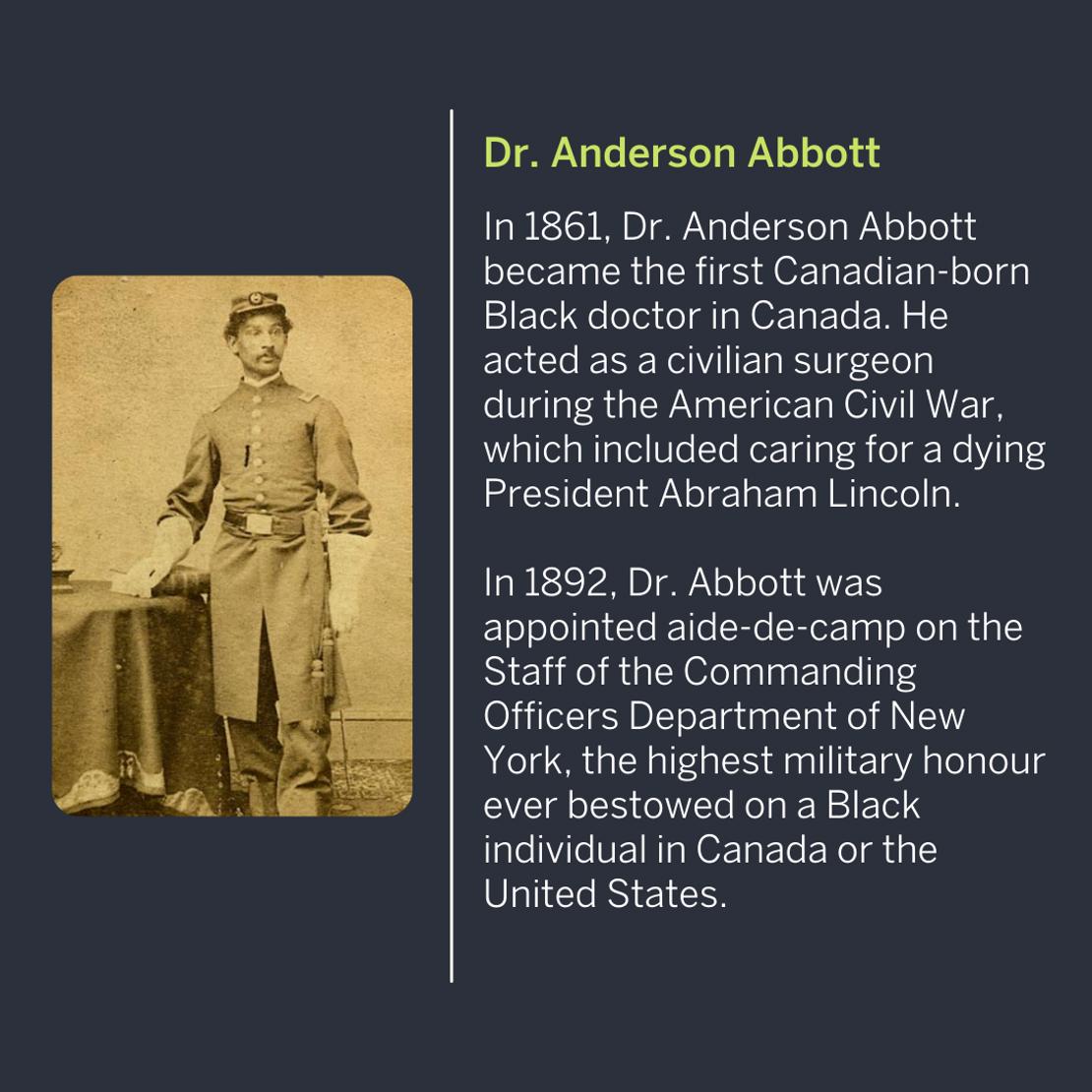
Dr. Anderson Abbott
In 1861, Dr. Anderson Abbott became the first Canadian-born Black doctor in Canada. He acted as a civilian surgeon during the American Civil War, which included caring for a dying President Abraham Lincoln. In 1892, Dr. Abbott was appointed aid-de-camp on the Staff of the Commanding Officers Department of New York, the highest military honour ever bestowed on a Black individual in Canada or the United States.
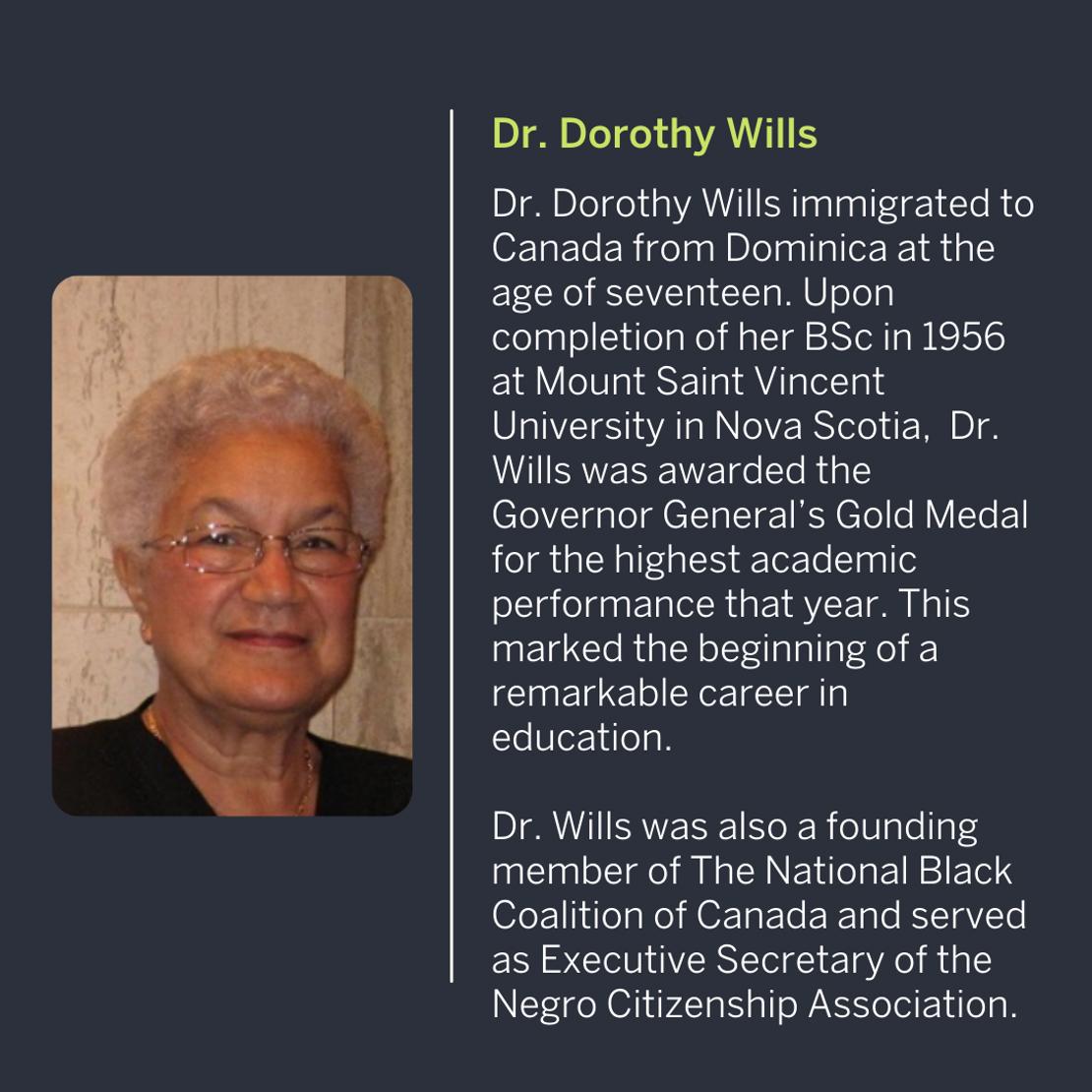
Dr. Dorothy Wills
Dr. Dorothy Wills immigrated to Canada from Dominica at age of seventeen. Upon completion of her BSc in 1956 at Mount Saint Vincent University in Nova Scotia, Dr. Wills was awarded the Governor General's Gold Medal for the highest academic performance that year. This marked the beginning of a remarkable career in education. Dr. Wills was also a founding member of The National Black Coalition of Canada and served as Executive Secretary of the Negro Citizenship Association.
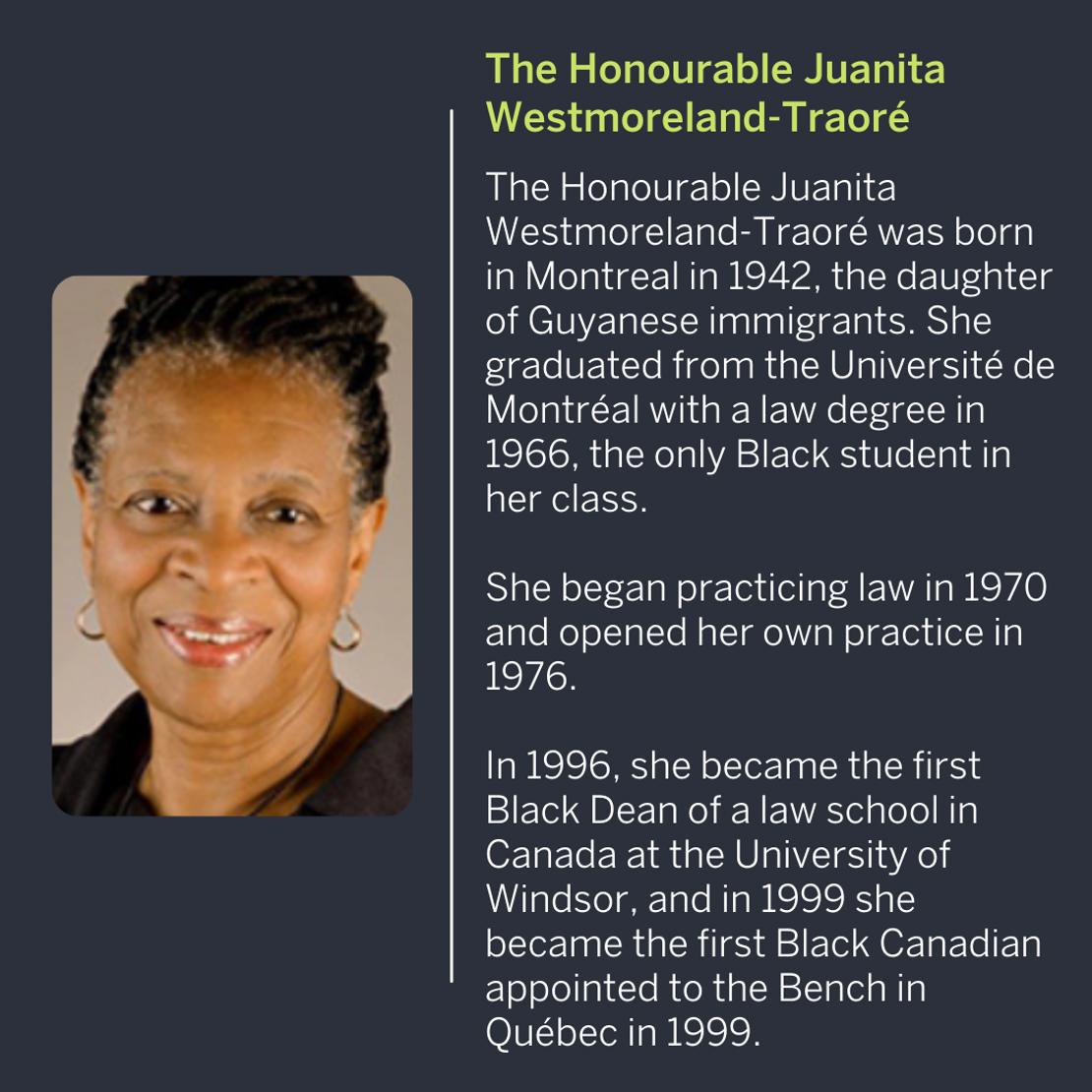
The Honourable Juanita Westmoreland-Traoré
The Honourable Juanita Westmoreland-Traoré was born in Montreal in 1942, the daughter of Guyanese immigrants. She graduated from the Université de Montréal with a law degree in 1966, the only Black student in her class. She began practicing law in 1970 and opened her own practice in 1976. In 1996, she became the first Black Dean of a law school in Canada at the University of Windsor, and in 1999 she became the first Black Canadian appoints to the Bench in Québec.

Ginella Massa
Ginalla Massa is an Afro-Latina Muslim and Canadian Screen Award-winner, best known as Canada's first hijab-wearing television news reporter, local anchor, and national host. Massa made history in 2015, believed to be the first television news reporter in North America to wear a hijab on-air when she was hired as a Video Journalist for CTV News in Kitchener, Ontario. She made international headlines again after anchoring the evening newscast at CityNews Toronto in 2016.
Week 4: Artists

Black Artists You Need to Know
Throughout Black History Month, the BSIC has been doing an amazing job spotlighting influential Black Canadians. The theme for Week 4 is artists.
Swipe through to read some of their profiles and tap the BHM highlight on the @iveybusiness account for more information.
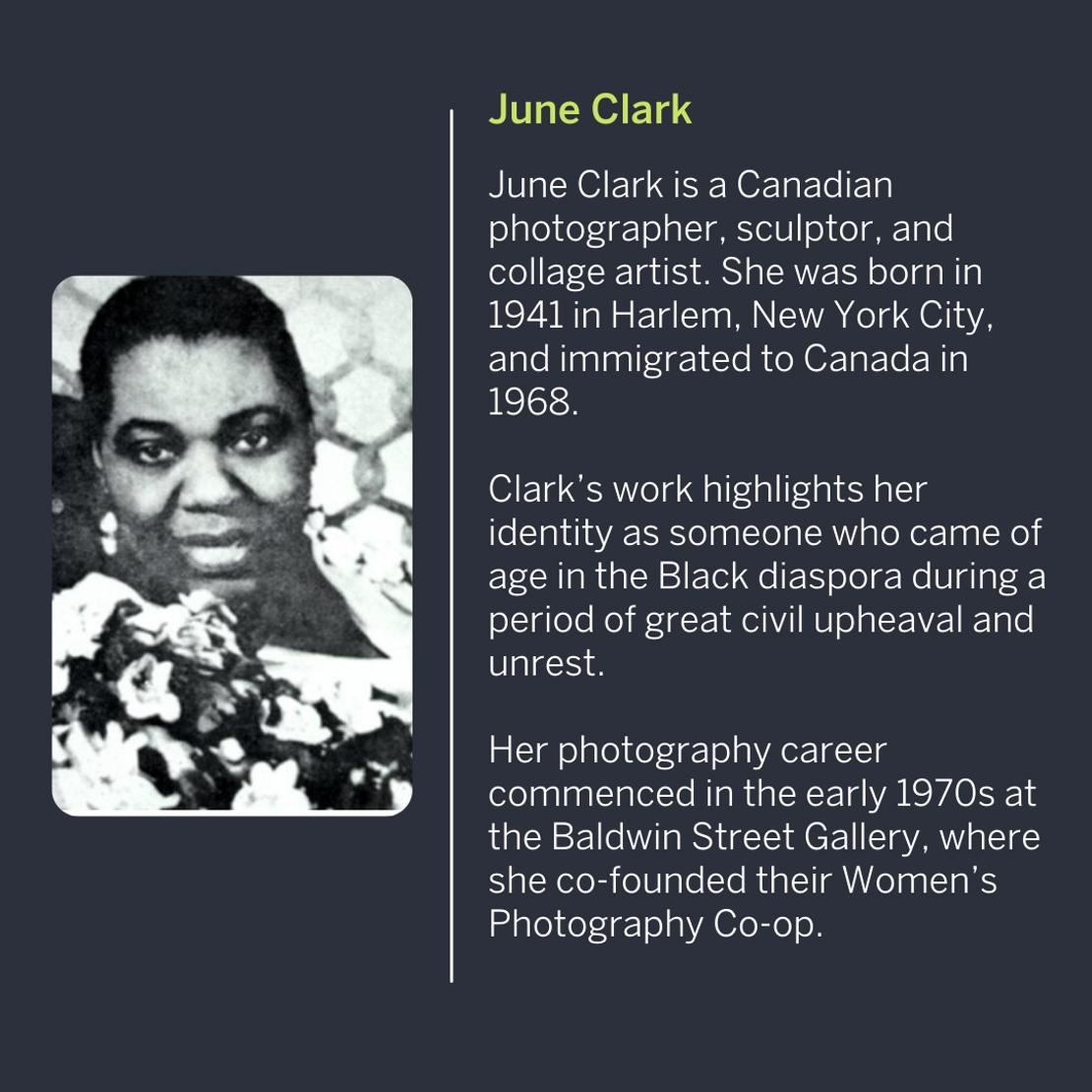
June Clark
June Clark is a Canadian photographer, sculptor, and collage artist. She was born in 1941 in Harlem, New York City, and immigrated to Canada in 1968. Clark's work highlights her identify as someone who came of age in the Black diaspora during a period of great civil upheaval and unrest. Her photography career commenced in the early 1970s at the Baldwin Street Gallery, where she co-founded their Women's Photography Co-op.
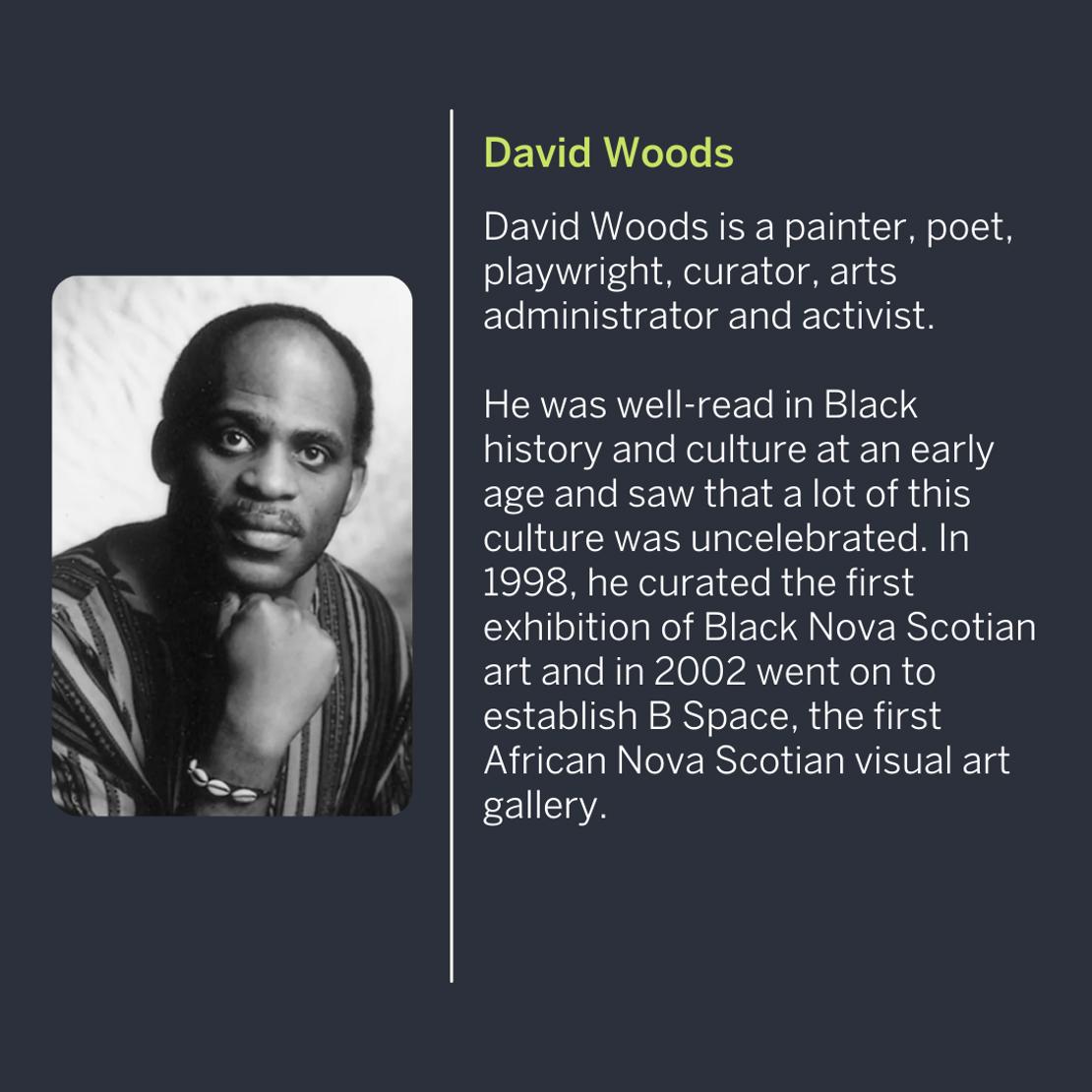
David Woods
David Woods is a painter, poet, playwright, curator, arts administrator and activist. He was well-read in Black history and culture was uncelebrated. In 1998, he curated the first exhibition of Black Nova Scotian art and in 2002 went on to establish B space, the first African Nova Scotian visual art gallery.
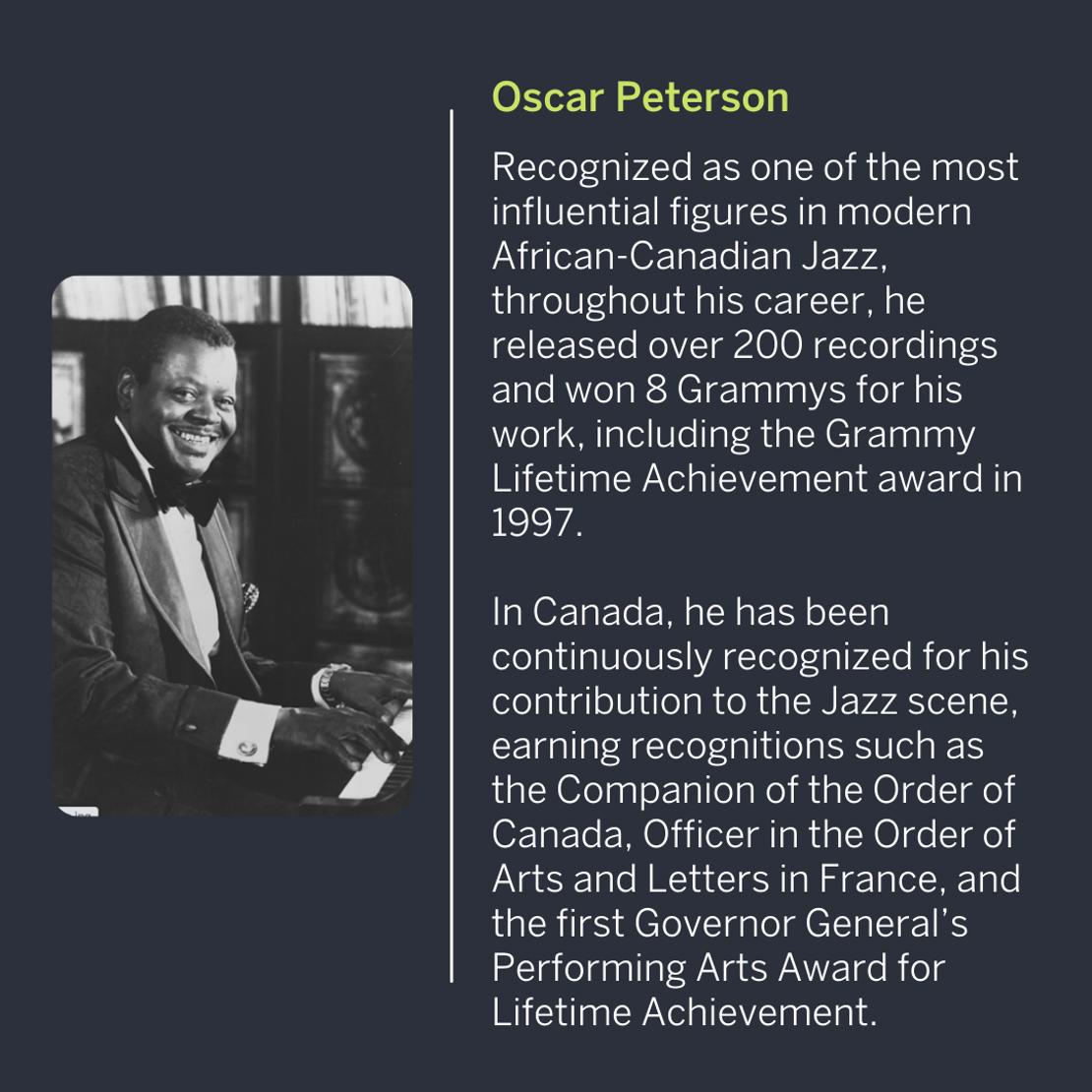
Oscar Peterson
Recognized as one of the most influential figures in modern African-Canadian Jazz, throughout his career, he released over 200 recordings and won 8 Grammys for his work, including the Grammy Lifetime Achievement award in 1997. In Canada, he has been continuously recognized for his contribution to the Jazz scene, earning recognitions such as the Companion of the Order of Canada, Officer in the Order of Arts and Letters in France, and the first Governor General's Performing Arts Award for Lifetime Achievement.
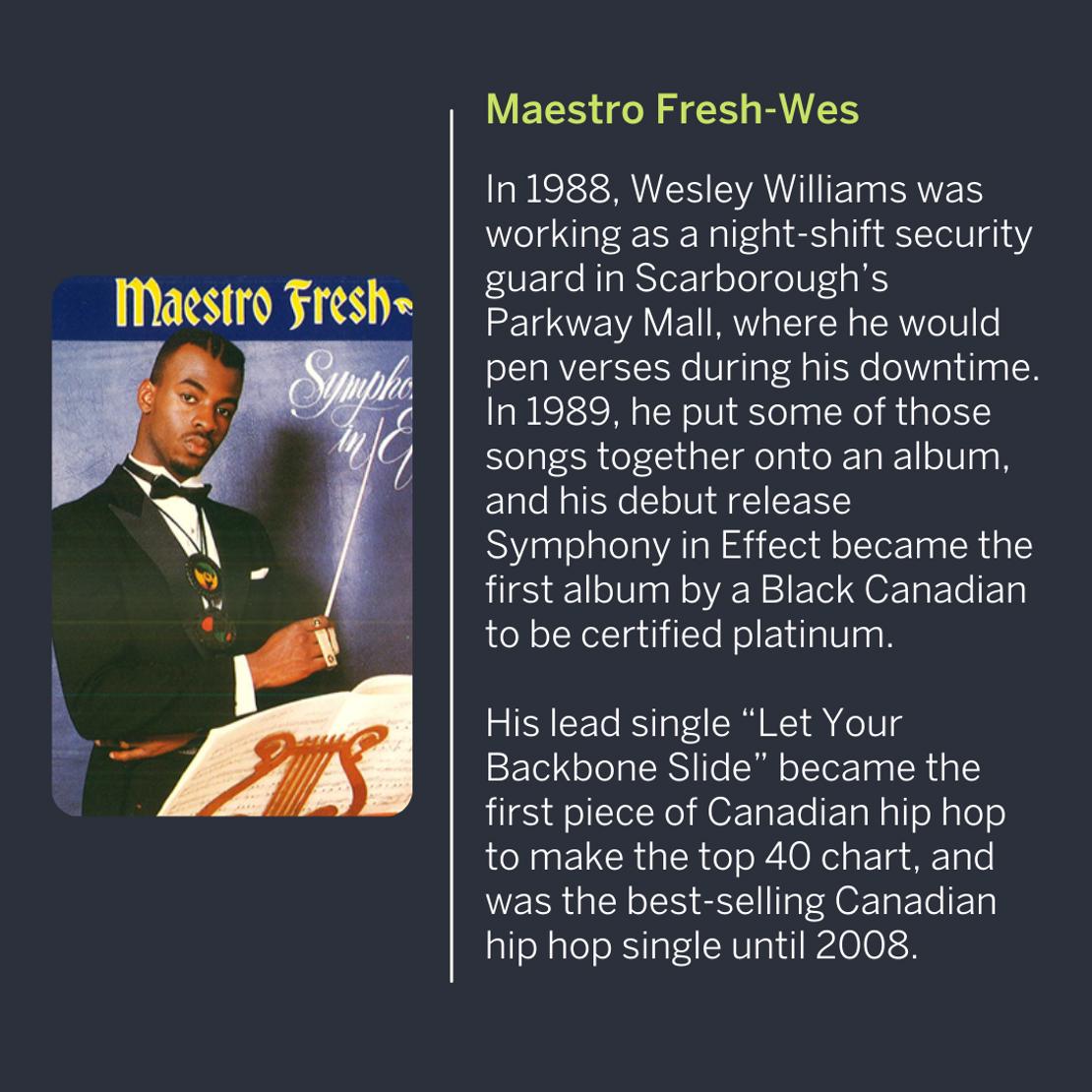
Maestro Fresh-Wes
In 1988, Wesley Williams was working as a night-shift security guard in Scarborough's Parkway Mall, where he would pen verses during his downtime. In 1989, he put some of those songs together onto an album, and his debut release Symphony in Effect became the first album by a Black Canadian to be certified platinum. His lead single "Let Your Backbone Slide" became the first piece of Canadian hip hop to make the top 40 chart, and was the best-selling Canadian hip hop single until 2008.
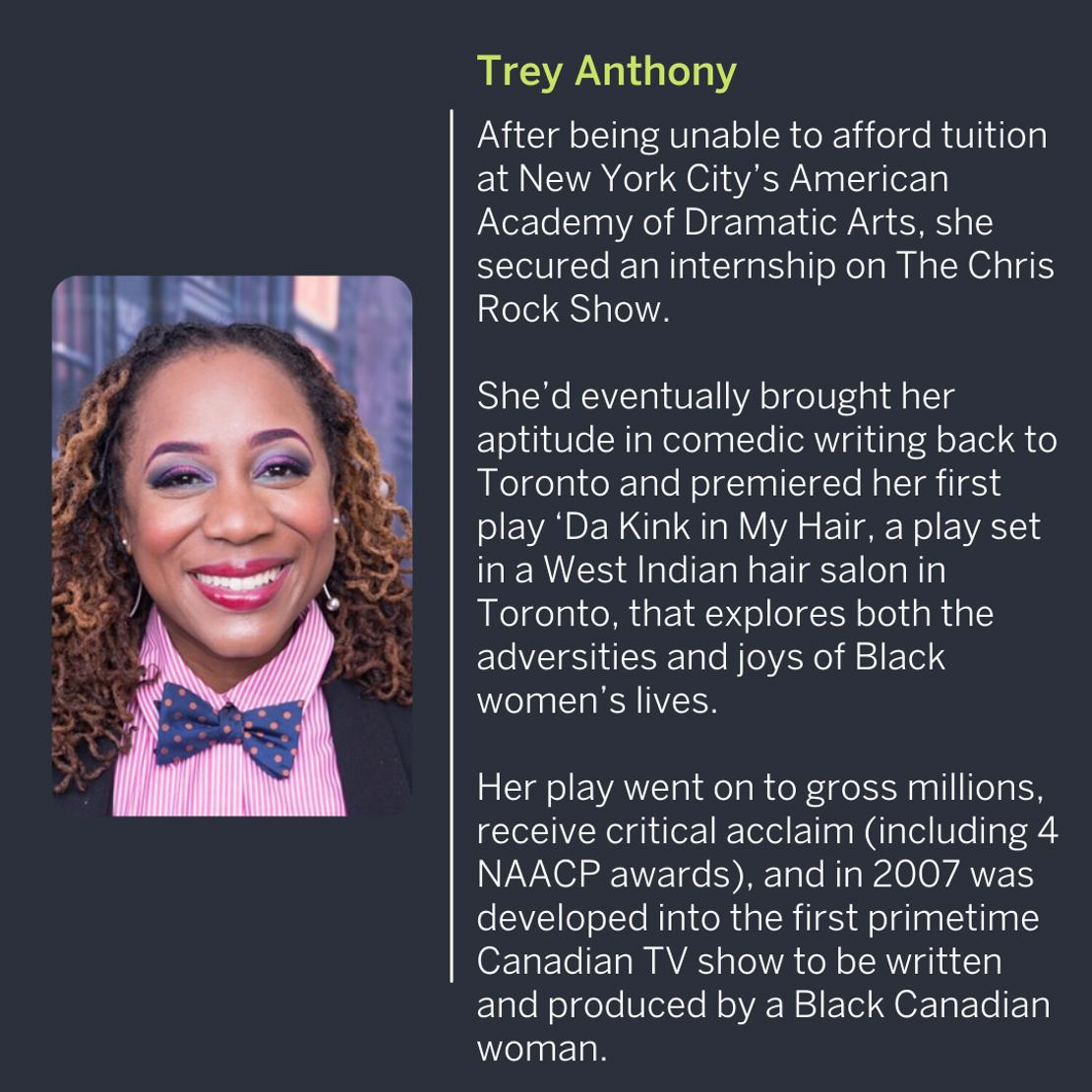
Trey Anthony
After being unable to afford tuition at New York City's American Academy of Dramatic Arts, she secured an internship on The Chris Rock Show. She'd eventually brought her aptitude in comedic writing back to Toronto and premiered her first play 'Da Kink in My Hair, a play set in a West Indian hair salon in Toronto, that explores both the adversities and joys of Black women's lives. Her play went on to gross millions, receive critical acclaim (including 4 NAACP awards), and in 2007 was developed into the first primetime Canadian TV show to be written and produced by a Black Canadian woman.
- Tags
- Diversity
